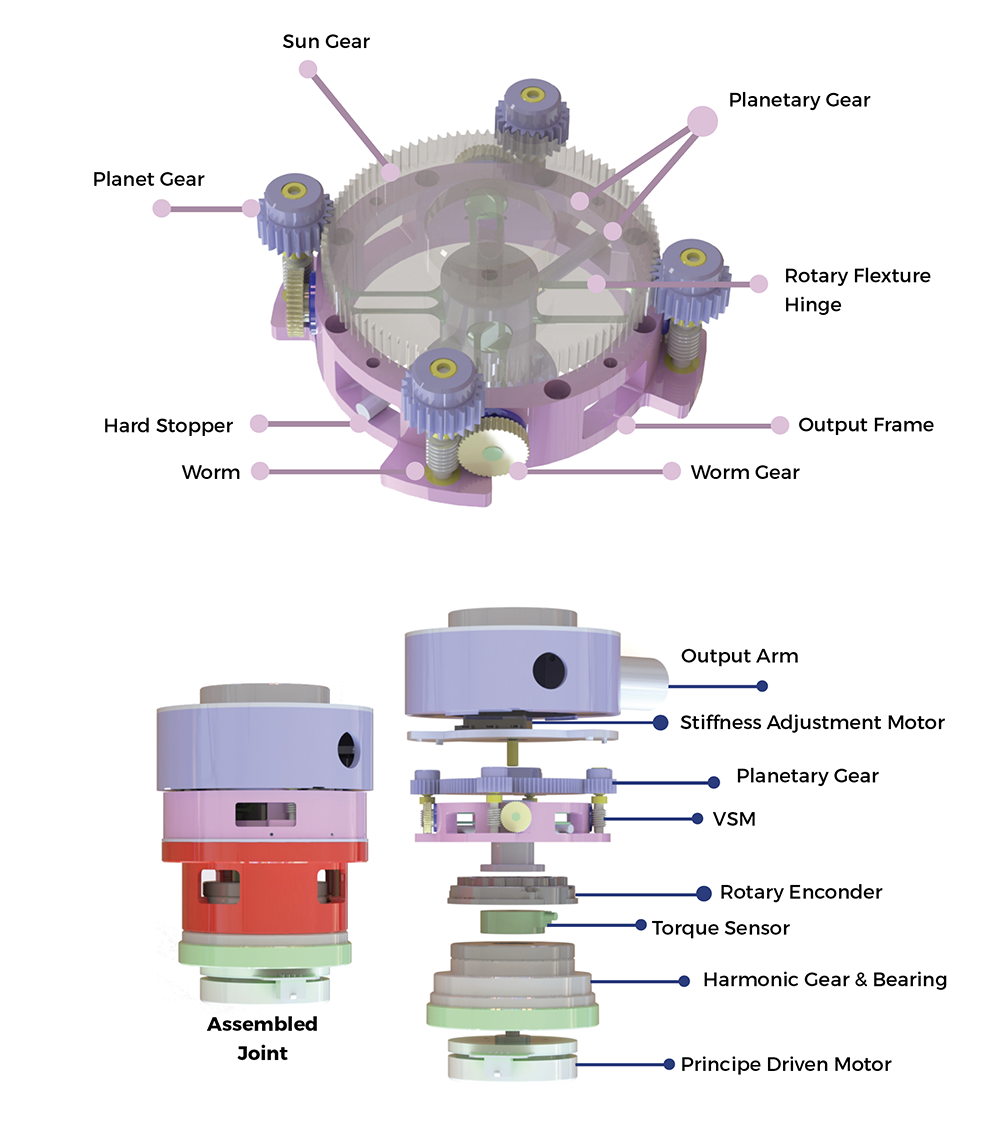
Research Spotlight
A Variable Stiffness Joint for Human-Robot Cooperation
SIMTech’s novel variable stiffness robotic joint allows for safe human-robot interactions

Advanced manufacturing requires that humans and robots work together in a shared environment for high production adaptability, flexibility, and efficiency. Human-robot cooperation is a burgeoning trend for the next generation of robots, and demands that trobots have intrinsic capabilities to safely interact with humans without the risk of injuries.
Due to their rigid links and joints, conventional industrial robots pose risks such as collision and crush accidents during human-robot interactions. Therefore, they typically operate within an enclosed workspace, without human involvement, eliminating the possibility of human-robot cooperation.
In response to this challenge, SIMTech developed a novel robotic joint with a structure-controlled variable stiffness mechanism. A robot with variable stiffness joints allows for the best of both worlds, having both flexibility for safety and rigidity for precision to suit the various application requirements – it can then operate in a soft mode in human-robot coorperation within a common workspace, and a rigid mode for high-velocity and high-payload tasks.
SIMTech’s variable stiffness robotic joint can realise its full-range stiffness adjustment in less than one second
Compared to existing designs, SIMTech’s variable stiffness robotic joint has several advantages. Firstly, its stiffness can be adjusted continuously over a large range within a seconds. Secondly, its stiffness adjustment is independent of joint motion, the latter also being more simply controlled compared to existing designs.
SIMTech’s variable stiffness robotic joint has the potential to become an essential component of the next generation of precision collaborative robots, opening new doors for human-robot cooperation and robot applications across a wide range of settings. In recognition of its novelty and potential, this work has also been published in IEEE Transactions on Industrial Electronics.
For more information, please contact
Dr Zhu Haiyue, Scientist
Adaptive Robotics and Mechatronics Group at
zhu_haiyue@SIMTech.a-star.edu.sg
A*STAR celebrates International Women's Day

From groundbreaking discoveries to cutting-edge research, our researchers are empowering the next generation of female science, technology, engineering and mathematics (STEM) leaders.
Get inspired by our #WomeninSTEM
.png?sfvrsn=843a4005_8)